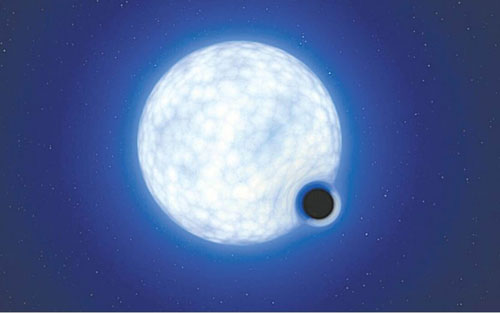A team of astrophysicists known for debunking previous supposed black holes announced a discov-ery of their own on Monday: the first “dormant” stellar-mass black hole spotted orbiting a star in a nearby galaxy.
While these black holes are thought to be com-mon throughout the universe, they have proved difficult to find, and they have themselves rejected several possible candidates in recent years.
Now the international team has found a “needle in a haystack”, said Tomer Shenar, an astrophysicist at the University of Amsterdam and lead author of a new study in the Nature Astronomy journal.
The team was searching the skies for something that could eventually become a binary black hole, in which two black holes orbit each other after swal-lowing their stars in a supernovae explosion.
“We found a quite massive star, that weighs 25 times the mass of our Sun, that is orbiting around something that we do not see,” Shenar said.
They believe the blue star, which is in the Large Magellanic Cloud galaxy that neighbours our Milky Way, is locked in a death dance with a black hole that has nine times the mass of our Sun.
These kinds of black holes are normally detected by the X-ray radiation they emit as they collect mate-rial from their companion star.
But this binary system, known as VFTS 243, is called dormant because it does not emit X-rays _ it is not close enough to suck matter from its star.
‘Black hole destroyer’ Hugues Sana, astrophysi-cist at the KU Leuven University in Belgium, said the Milky Way alone is thought to have around 100 million stellar-mass black holes, which are far smaller than their supermassive big brothers.
But only 10 have been found, said Sana, a co-author of the study.
This could be because many are lying dormant, biding their time to eventually swal-low their companion star.
Sana said observing them was like watching two people dance in a dark room, one dressed in white and the other in black.“You might only see one dancer, but you know the other one is there. ”—AFP










